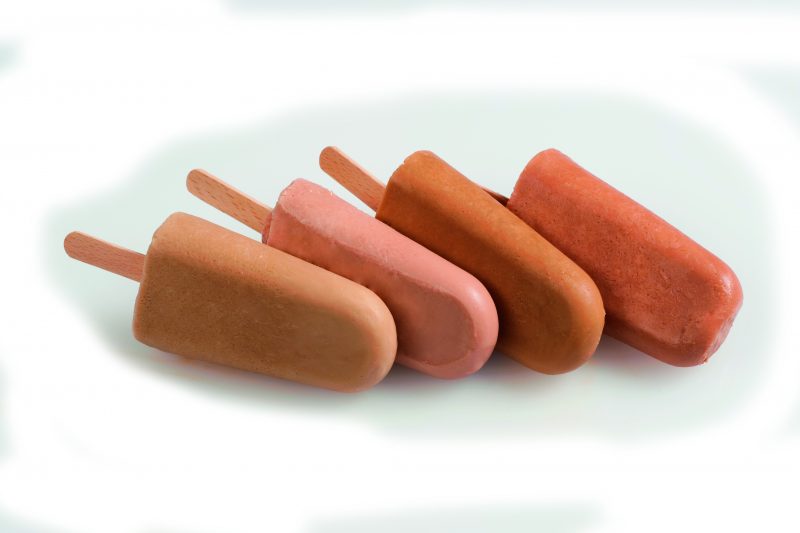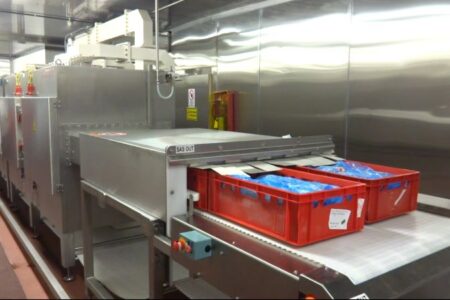It’s all coming up caramel

According to market research, 2013 saw in the region of 26,000 new food and beverage products containing natural colours launched to the global market. This is in part a response to growing consumer demand for natural products and the ‘clean label’ trend, as Christian Benetka Uher, head of business unit colours at Döhler, explains, “The demands of many consumers are still going one step further. Not only does the naturalness of the colour play an important role, but so does the source of the extracted natural colouring substance.”
In addition, legal modifications on colouring food are also forcing manufacturers to consider the ‘naturalness’ of their colourants. Last month, the European Commission altered the rules on the use of additives containing aluminium in product categories including ice cream, confectionery and bakery ingredients. As a result of the new EU guidance notes, there is a demand for natural colouring concentrates.
One company responding to this demand is Döhler, which offers a range of natural colour alternatives for various applications, including a caramel collection.
Döhler application specialists recommend colouring concentrates extracted from malt and apple as alternatives. They do not carry E numbers and are therefore just declared as food.
It’s only natural
Sensient Food Colors Europe has also extended the range of EU compliant caramel alternatives on offer with the launch of a line of natural brown shades for food and beverage applications. Like Döhler, Sensient is focused on natural ingredients and so its colourants use plant-based products which comply with EU guidance.
The colours – from a milk coffee shade to rich dark browns – are suitable for use across a wide range of applications: apple-based products offer several attractive brown shades, particularly suitable for beverages and confectionery; alternatives based on malt and burnt sugar are available for dairy products; and a range of oil soluble products are ideal for use in savoury and snack applications.
“One of the biggest challenges has been to produce rich natural brown shades for use in confectionery to meet the demanding product and processing conditions, such as in pan coatings and hard boiled candies,” explains Dr Andreas Klingenberg, technical director, Sensient Colors Europe.
“Sensient has developed the technologies and know-how to meet these processing and stability challenges, using natural components as building blocks to create high performance solutions.”
Caramel creations
According to market research firm Innova, the demand for dessert flavoured ice creams is growing; between 2010 and 2013, product launches of this type increased by 47.7 per cent in Europe. With caramel featuring heavily in dessert formulations, the flavour has also seen growth rates of 8.3 per cent in the same period.
Responding to this boom in caramel and dessert flavours, as well as the consumer demand trend for natural products, Wild has launched new combinations of fruit and caramel blends.
Available as solids and liquids, varieties include apricot and creamy caramel, pear and salted caramel and banana and burnt caramel. As a result of the products’ easy handling and varying textures – particularly in liquid form – the range can be used for both toppings and fillings.
Flavour savour
Another company responding to consumer demand for caramel flavours is Tate & Lyle. It has released a sweetener prototype available in caramel and hazelnut flavours in response to the increasing demand for flavoured coffee.
The flavoured tabletop coffee sweetener is made with the company’s zero calorie sweetener sucralose, which has a sweetening power approximately 600 times that of sugar, appealing to calorie conscious coffee drinkers. Furthermore, its liquid format means the product can be added in quantities to suit individual consumer tastes.
Paul Freeman, marketing manager at Tate & Lyle, says, “Demand for flavoured coffee is continually growing across Europe, but to date there has been no real alternative to calorie-heavy syrups or liquid concentrates. Drawing on our extensive knowledge and expertise in developing beverage solutions for European manufacturers, we have created this product to address the issue of giving consumers the sweet treats they demand, while dramatically reducing calorie intake.”
Say ok to oak
Having also recognised the boom in flavoured drinks and keen to provide caramel flavours to tap into the market is Treatt, which has launched a range of sustainable liquid oak extracts.
The new oak range includes a choice of extracts made from French and American oak and at varying toast levels, delivering a flavour profile that mirrors the effects of charring oak barrels used for storing spirits. The high toast French oak extracts have pronounced caramel and smoky notes whilst the lightly toasted American oak extracts have a maple and vanilla character.
“Wood is a very complex material and, if processed correctly and treated with respect, it can unlock a whole new experience in the area of taste,” explains Douglas Rash, group VP of global sales at Treatt. “Traditionally, it has been difficult for manufacturers to formulate with oak extracts in alcoholic beverages due to problems associated with residual solvent and variations in the quality of the extract. Now, we have developed a manufacturing method that means we can tap into the full flavour potential of sustainable oak wood. The water-based technique uses no chemicals, enzymes or organic solvents and allows us to work in harmony with nature to create exciting and on-trend alcoholic beverage concepts.”



